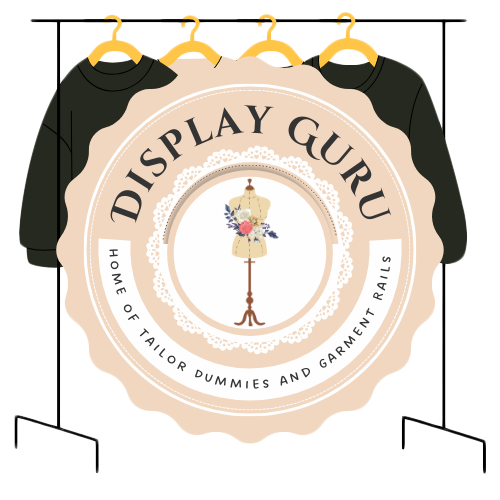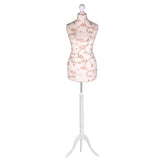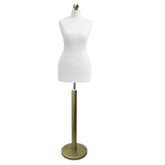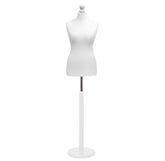Your Guide to Sewing Organiser Boxes
Sewing organiser boxes are what stand between a chaotic sewing space and a genuinely creative, efficient sanctuary. These aren't just any old containers; they're specialised storage solutions, from portable caddies you can grab and go, to modular drawer units that grow with your stash. They are designed to bring order to everything from thread and bobbins to your smallest notions and tools, making your sewing time so much more productive and, frankly, more joyful.
From Creative Chaos to Calm Control
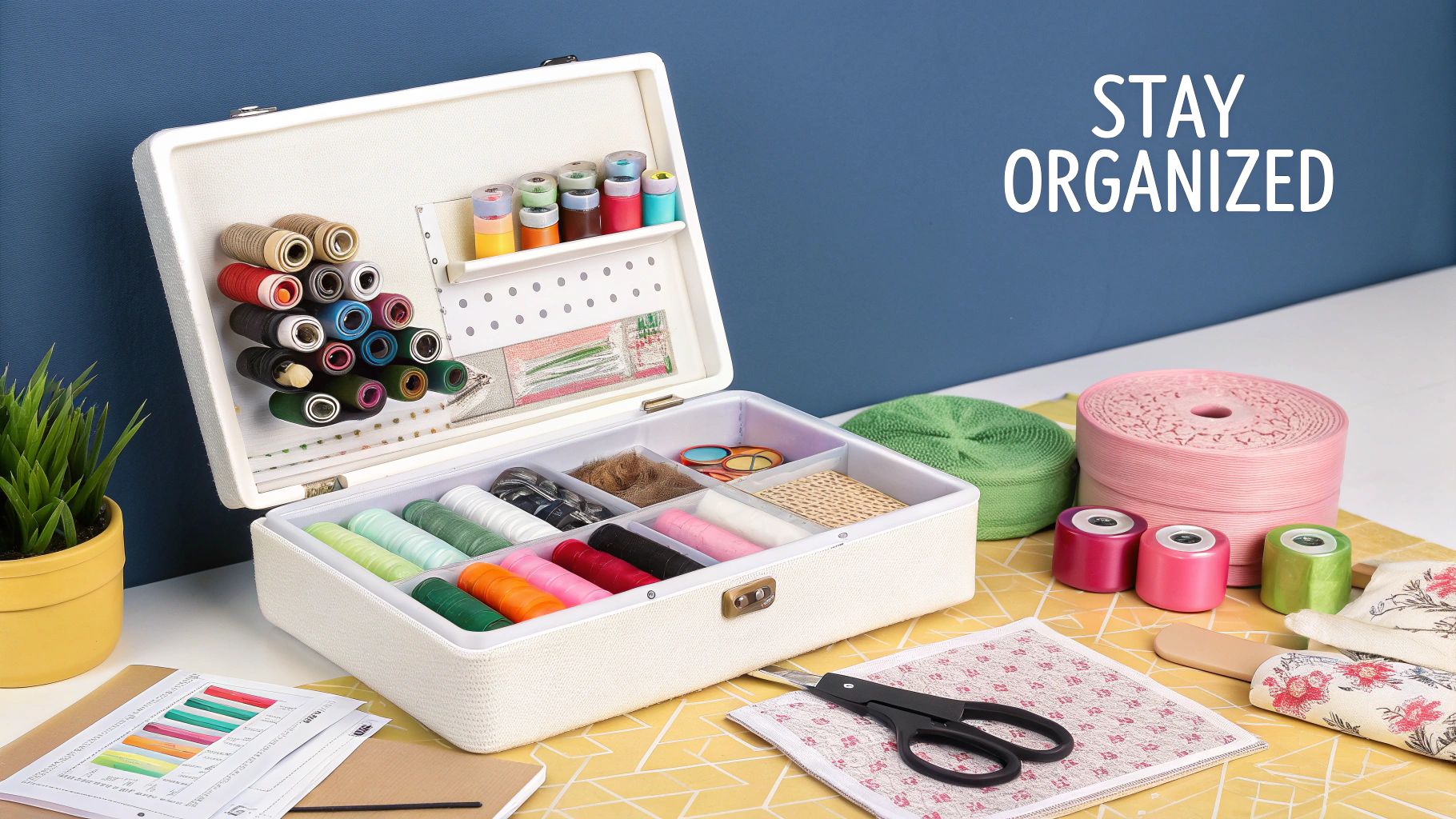
If you're a passionate sewist, you know the scene well. One minute your workspace is a creative haven, the next it's a beautiful but overwhelming mess. The frustration is all too real: tangled threads, lost bobbins, and that endless hunt for the one specific button you know you bought last month. It’s a familiar story that can kill your creative spark before a project even gets started.
This is exactly where dedicated sewing organiser boxes come in and completely change the game. The key is to stop seeing organising as a chore and start viewing it as the gateway to better, less stressful sewing. Just imagine reaching for the exact shade of thread you need without fighting a tangled web of spools, or finding your sharpest fabric scissors in an instant.
The True Value of an Organised Space
A well-organised sewing area isn't just about looking tidy; it has a direct, positive impact on your craft. When you store your valuable tools properly, you're protecting them from dust and damage, which naturally extends their lifespan. Good storage also saves you money by preventing those accidental duplicate purchases—no more buying a new pack of needles only to find the ones you were looking for a week later.
The real aim is to turn your space from a source of stress into a hub of genuine productivity. When you can find what you need, precisely when you need it, you reclaim precious time that is much better spent actually sewing instead of searching.
This shift towards home-based crafting has had a noticeable effect. In the UK, interest in home sewing has really taken off, leading to a 13% increase in the value of the household sewing machine market. This renewed passion for DIY projects means more supplies to manage, driving the demand for essentials like sewing organiser boxes.
Building Your System
Getting your sewing space in order really begins with taking stock of what you have and figuring out the best way to store it. For some inspiration on how to get started, you might find our guide on https://www.displayguru.co.uk/blogs/news/sewing-room-ideas helpful. A truly solid system accounts for all your tools, from the largest pieces of essential sewing equipment right down to the tiniest snaps and pins.
Ultimately, embracing a bit of organisation brings a wonderful sense of calm and control to your creative process. It paves the way for a much more enjoyable and efficient workflow, freeing you up to focus on what you love most: bringing your brilliant ideas to life.
How to Choose the Perfect Sewing Organiser Boxes
Finding the right sewing organiser boxes isn't about discovering one perfect solution. It's about matching the storage to your personal creative habits. After all, the ideal choice for a quilter wrangling stacks of fat quarters is worlds away from what a dressmaker needs for their delicate zips and silks.
Before you buy anything, take a good, honest look at your supplies. What's causing the most clutter? Are you drowning in a sea of thread spools, or is your biggest headache taming bulky pieces of fabric? Your answer will be the key to picking the right materials.
Match the Material to Your Needs
The material of your organiser boxes has a huge impact on their durability, how easy they are to move around, and even the overall feel of your sewing space. Each option comes with its own set of pros and cons.
-
Durable Plastic: Clear plastic boxes are the undisputed workhorses of sewing organisation. Being able to see what’s inside at a glance saves you from that frustrating game of opening ten identical boxes just to find one thing. They're tough, they stack beautifully, and they're a breeze to clean.
-
Classic Wood: For a more timeless, premium feel, you can't beat wooden boxes. They are incredibly durable and can be a genuinely beautiful feature in a sewing room. While they are heavier, they’re perfect for stationary storage, especially for valuable tools or heirloom notions you want to keep safe.
-
Soft Fabric: Fabric bins and pouches offer a lightweight and flexible alternative. They’re brilliant for storing yarn, fabric bundles, or works-in-progress because they won't snag delicate materials. Many are also collapsible, which is a fantastic space-saver when they're not in use.
This drive for better storage isn't just something happening in our own craft rooms. The global market for sewing bags and organisers was valued at $4.5 billion and is expected to hit $7.2 billion by 2033. This surge shows just how much sewing as a hobby is growing worldwide, and the demand for practical, ergonomic storage is a clear reflection of that trend, especially within the UK's massive DIY community. For those interested in the numbers, a detailed report on the sewing bag market offers deeper insights.
To help you visualise the options, here's a quick comparison of some popular organiser styles, looking at things like their compartment capacity, cost, and how easy they are to move around.
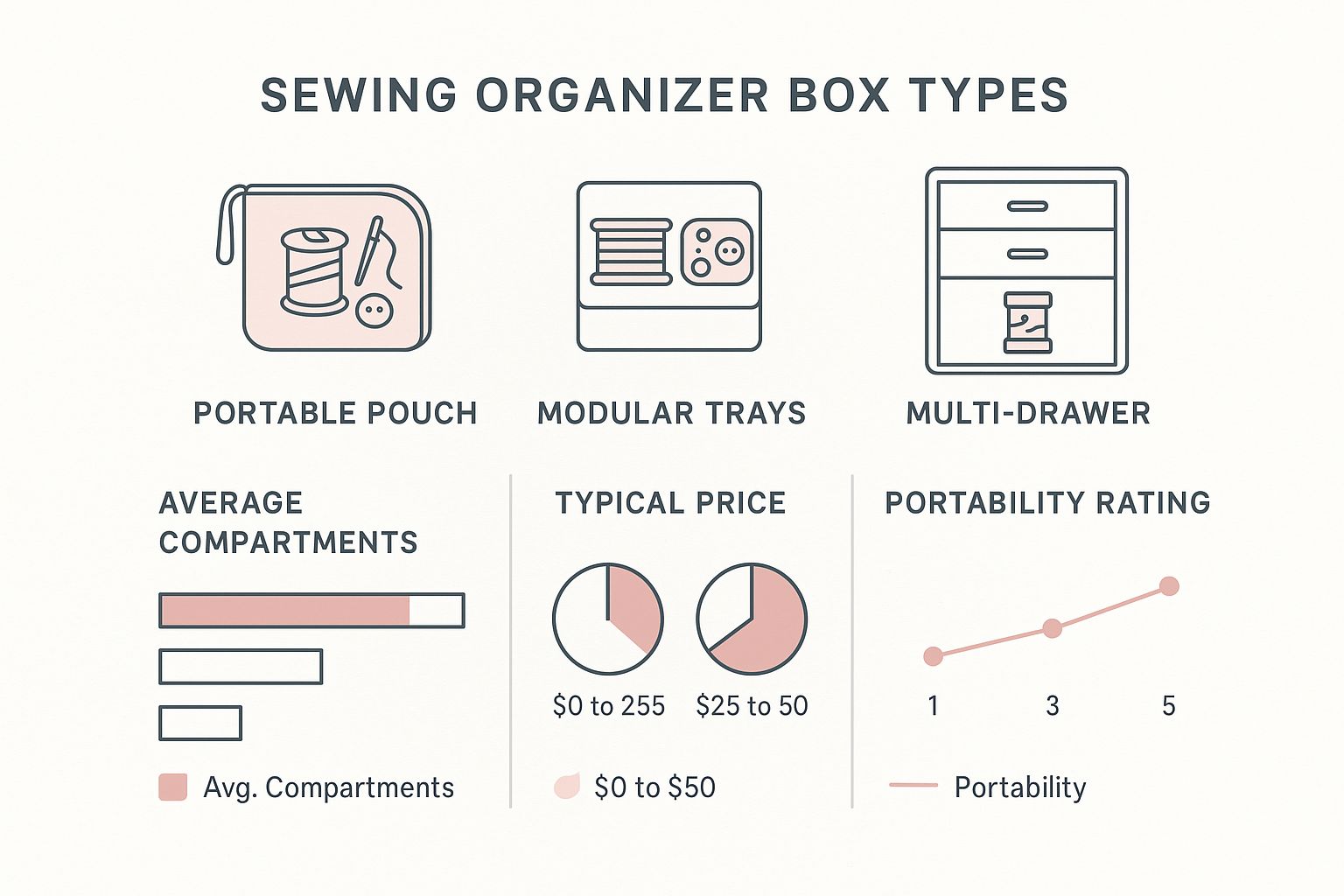
As you can see, there's often a trade-off. Highly portable pouches typically have fewer compartments, while the big multi-drawer units give you maximum storage but aren't designed to be moved.
To break it down even further, let's compare the most common types of organisers side-by-side.
Comparing Sewing Organiser Box Types
This table lays out the strengths and weaknesses of different materials and styles. Think about what you sew most often and where you do it to find the best fit for your craft room.
| Organiser Type | Best For | Key Features | Considerations |
|---|---|---|---|
| Clear Plastic Boxes | General-purpose storage; small notions, thread, and accessories. | See-through, stackable, durable, easy to clean, often has dividers. | Can become brittle over time; aesthetics might not suit all tastes. |
| Wooden Chests | Stationary storage for valuable tools, heirloom items, or as a decorative piece. | Highly durable, beautiful aesthetic, secure storage for sharp tools. | Heavy, not portable, generally more expensive. |
| Fabric Bins & Baskets | Storing fabric, yarn, and works-in-progress. | Lightweight, flexible, won't snag materials, often collapsible. | Offers less protection; can get dusty if left open. |
| Portable Totes & Caddies | Sewists who attend classes, workshops, or sew in different rooms. | Handles for carrying, multiple compartments, designed for travel. | Smaller capacity; may not be suitable for large-scale storage. |
Ultimately, the best choice really does come down to your individual needs. A combination of different types is often the most practical solution for a well-rounded sewing space.
Evaluate Internal Features
The real magic of a brilliant organiser often lies on the inside. It’s easy to just look at the outer box, but you need to consider the internal layout.
The most effective organisation systems are those that fit your workflow, not the other way around. Choosing boxes with the right internal features is a crucial step toward creating a truly intuitive space.
Adjustable dividers are an absolute game-changer. They let you create custom-sized slots for everything from tiny buttons to bulky presser feet. If you're a thread enthusiast, specialised bobbin holders or thread racks built into a larger case are essential for preventing those catastrophic tangles. And, of course, secure pin cushions or magnetic sections are vital for safely stashing sharp objects.
By thinking carefully about what you own and how you work, you can choose sewing organiser boxes that do more than just hold your stuff—they'll actively help make your creative process smoother and more enjoyable.
A Practical Method for Sorting Your Supplies
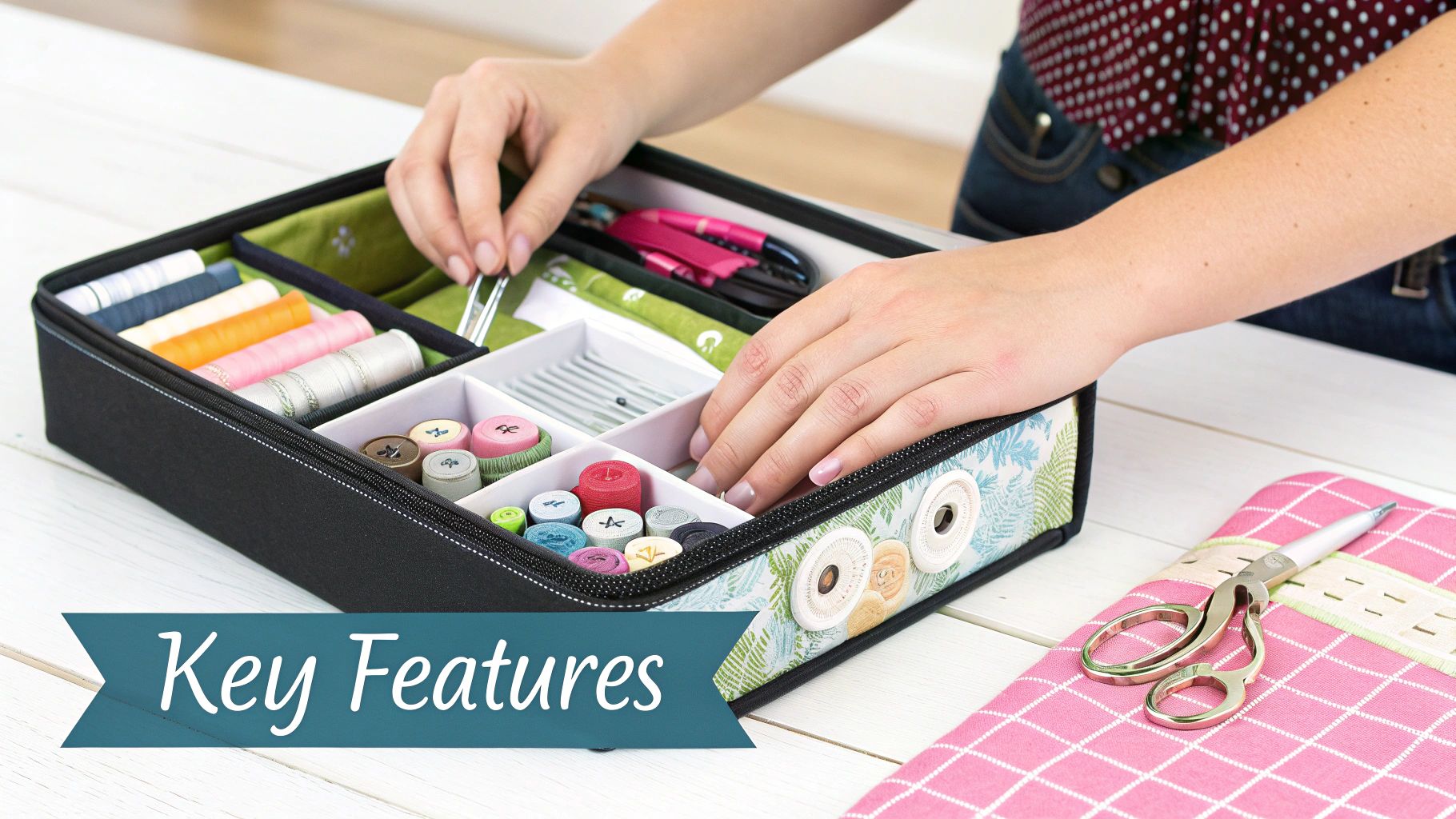
Before your shiny new organiser boxes can solve your storage woes, you have to face the stash. I know, it can feel like a monumental task, but the goal here is to simplify, not create more work. Let’s start by gathering everything from all its hiding spots—the old biscuit tin overflowing with buttons, the bag of fabric scraps tucked under the desk, that one drawer filled with a chaotic jumble of threads.
Bringing it all into one central space is the first, and honestly, most crucial part of this process. It gives you a true, unfiltered picture of what you actually own. I find this moment is often a bit of an eye-opener! For now, resist the urge to sort as you go. Just focus on collecting it all together.
Once your entire collection is laid out before you, it's time to start making sense of it all by creating some broad categories. Don't get bogged down in the details just yet.
Create Simple Sorting Categories
Think in terms of function and type. Your initial piles can be as straightforward as these core groups, which stops you from getting overwhelmed early on.
- Threads & Bobbins: Every spool, skein of embroidery floss, and all your bobbins.
- Fabric: All of it. From large cuts of yardage right down to those tiny, treasured scraps you can't bear to part with.
- Notions: This is your catch-all category for buttons, zips, elastic, snaps, interfacing, and other haberdashery.
- Tools: Think scissors, rotary cutters, seam rippers, rulers, and marking pens.
- Patterns: Both your commercial paper patterns and any PDFs you've printed out.
With your supplies roughly grouped, you can begin the decluttering phase. Set up three distinct zones: Keep, Donate/Gift, and Discard. Go through each of your main piles, making quick, honest decisions. Will you genuinely use it? That beautiful fabric you’ve held onto for five years for a project you no longer feel excited about could bring so much joy to another sewist.
Tackling your stash isn't just about tidying up; it's about curating a collection of supplies that actively inspires you. Letting go of items that no longer serve your creative vision makes room for new possibilities.
Handle Specific Items with Care
As you sort, take a moment to properly prep items for storage. A little effort now will save you a world of frustration later. Wind any loose, tangled threads onto bobbins or small pieces of card to prevent a future knotted mess.
Grab a scrap of fabric and test your marking tools—your chalks, your fabric pens—to make sure they still work before you give them a home. This is also the perfect time to get any sharp objects safely contained. Pop loose pins and needles into a small, secure tin or a magnetic holder. Many sewing organiser boxes are built specifically for these kinds of items, and you can see a great range of possibilities in our guide to sewing box organisers.
By following this simple, practical method, you’ll turn that overwhelming mountain of supplies into a clear, manageable inventory. With everything sorted and prepped, arranging it all in its new home becomes a genuinely satisfying experience.
Arranging Your Supplies for an Efficient Workflow
Right, you’ve sorted through your stash and had a good declutter. Now for the satisfying part: arranging everything in your new sewing organiser boxes. This isn't just about tidying up; it's about designing a system that works for you and makes your sewing time feel seamless. The ultimate goal is to have every tool and notion right where you’d instinctively reach for it.
The best way I've found to do this is to think about how often I use something. My go-to fabric shears, my trusty seam ripper, and a few spools of neutral thread? They live in a little caddy right on my sewing table, always within arm's reach. Things I use less often, like my big collection of zips or speciality embroidery floss, are tucked away in clearly labelled boxes on a nearby shelf. It's a simple change, but it makes a world of difference.
Create Project-Specific Kits
Here’s a game-changing tip I learned years ago: think in projects, not just categories. Instead of having one massive box with every notion you own, try putting together dedicated kits for specific tasks. When inspiration for a new project hits, you can just grab a kit and go.
- A "Mending Station" Box: I keep a small organiser with a rainbow of thread colours, various needles, iron-on patches, and spare buttons. It makes quick repairs so much less of a chore.
- A "Quilting Essentials" Caddy: This is loaded with my rotary cutter, a small cutting mat, my most-used quilting rulers, and a few marking pencils.
- An "Active Project" Tray: This is a must! I use a simple, shallow tray to corral all the bits for my current make – the pattern, fabric cuts, matching thread, and wound bobbins. No more hunting for that one specific piece.
If you're looking for more brilliant ideas on setting up your space, this ultimate guide for creative workspace mastery is packed with inspiration.
The most intuitive sewing spaces are organised by function, not just by item type. By grouping supplies based on how you use them, you eliminate unnecessary steps and keep your creative momentum going.
The Power of Visual Organisation
Don't underestimate how much easier it is when you can see what you've got. I'm a huge fan of clear boxes, especially for colourful things like thread, bias binding, or buttons. Being able to spot the exact shade you need in a second saves so much time and frustration. If you are using opaque boxes, good, clear labelling is absolutely essential.
This focus on efficiency isn't just a hobbyist's quirk. It’s a principle that scales right up to the professional level. In fact, the UK's industrial sewing machine market is expected to grow by a 2.6% CAGR. This professional growth highlights a demand for highly efficient workflows, proving that smart organisation is key, whether you're sewing for pleasure or for a living.
Finally, think about tying your newly organised space into your bigger plans. If you know what you want to make next month, you can keep those specific fabrics and patterns closer to hand. A great way to get on top of this is by using a sewing project planner to match your stash to your sewing goals. When your space is thoughtfully arranged, it stops being just storage and becomes a dynamic partner in your creativity.
Keeping Your Sewing Space Organised for Good
An organised sewing room isn’t a one-time project; it’s a habit. The real challenge isn’t the initial big sort-out into those shiny new sewing organiser boxes, but keeping it that way week after week. The secret is to build simple, sustainable routines that stop the clutter from creeping back. These small habits ensure your hard work pays off, turning your sewing room into a permanent haven of creativity.
The single most effective habit I've ever adopted is the 'five-minute reset'. It's simple: after every single sewing session, I spend just five minutes tidying up before leaving the room. This means putting tools back where they live, sweeping up stray threads, and putting fabric scraps into their designated bin. It feels like a tiny thing, but it makes a world of difference. You always come back to a clean slate, ready to dive straight into your next project.
Build Sustainable Organisation Habits
To stop your beautifully curated stash from becoming a chaotic mess again, you have to get smart about what comes in. This is where a couple of key principles can really help you manage new supplies without undoing all your good work.
A brilliant rule to live by is 'one in, one out'. Every time you bring home a new piece of fabric or a shiny new tool, something old has to leave. This really forces you to be more intentional with your purchases and keeps your inventory from ballooning. It's a straightforward but powerful trick to prevent your collection from spiralling out of control.
Another practical tip is to create a 'quarantine box'. This is just a dedicated box or basket for all new supplies. Nothing gets integrated into your main storage until you have the time to process it properly—whether that's pre-washing fabric, winding thread onto bobbins, or labelling new notions. This simple step prevents a quick trip to the haberdashery from turning into a messy pile on your cutting table.
Maintaining an organised space isn't about achieving perfection. It's about creating simple, repeatable systems that work for you. A tidy environment fosters a clear mind, allowing your creativity to flow without the frustration of clutter.
For a more comprehensive look at making your entire sewing room a more functional and inspiring space, you can find a wealth of information in our complete guide on sewing room organization.
Think Beyond the Sewing Room
Sometimes, the best solutions for a creative space come from looking at how other spaces are managed. To keep your sewing area consistently organised, it's worth exploring general storage maximization techniques that apply to more than just small containers. Principles used to maximise space in a bedroom or kitchen can be surprisingly effective for managing fabric stashes and tool collections.
By weaving these small, consistent habits into your sewing routine, you transform organisation from a dreaded chore into a series of small, effortless actions. This is how you ensure your sewing room remains a true sanctuary for creativity, ready for you whenever inspiration strikes.
Common Questions About Sewing Organisation
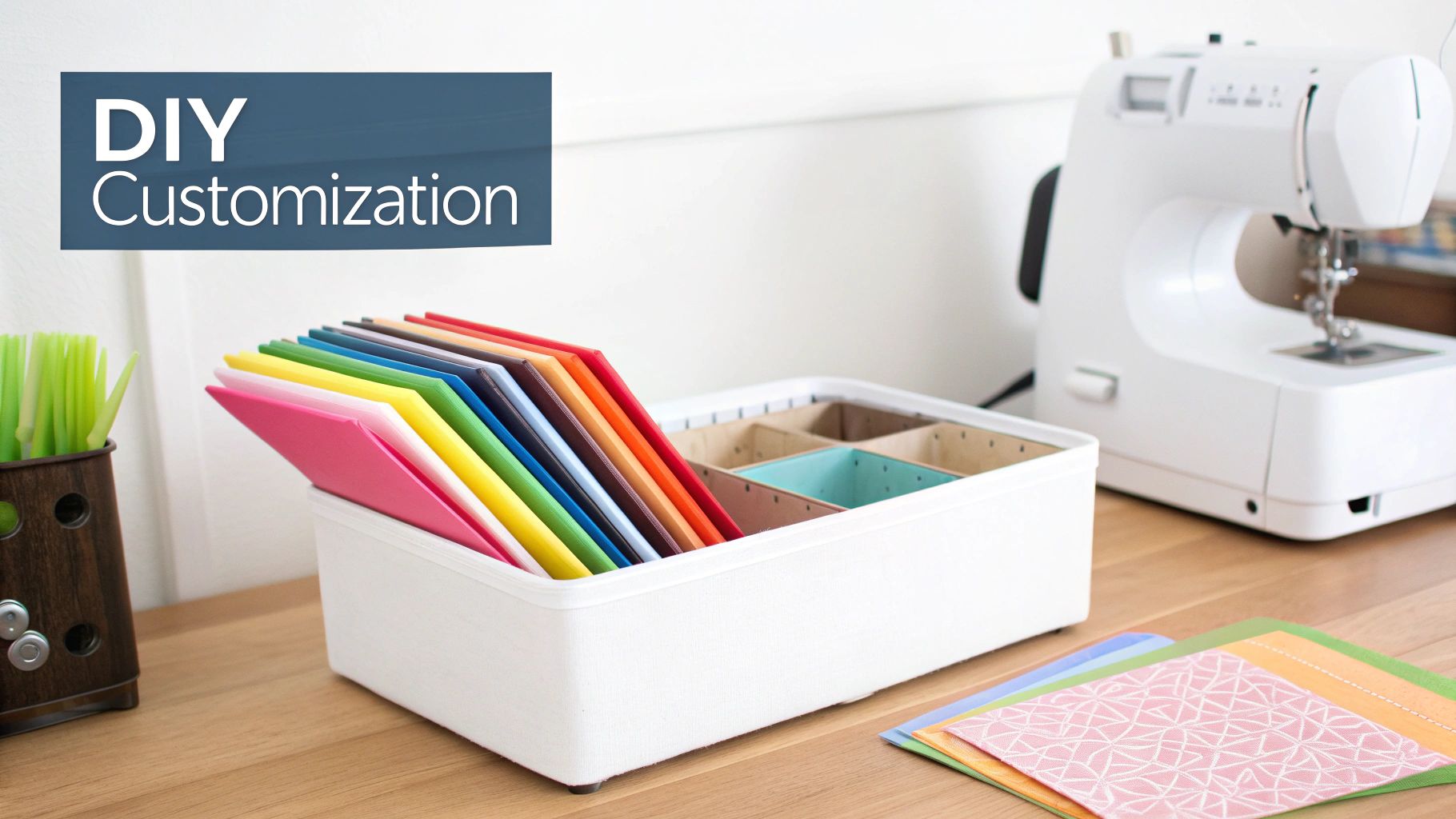
Even with the best intentions and a stack of new sewing organiser boxes, a few tricky questions always pop up. Let’s get into some of the most common hurdles sewists face and find some practical ways to clear them.
How Can I Organise Fabric Without It Taking Over?
We’ve all been there—a fabric stash that seems to have a life of its own. The trick is to make everything visible and sort it in a way that makes sense to you. I find sorting by fabric type (cottons, knits, silks) or by project type works wonders. It immediately makes the mountain feel more like a manageable molehill.
Clear plastic tubs are a lifesaver for seeing what you own at a glance. For smaller pieces like fat quarters, think like an archivist. A mini filing system using shallow drawers or boxes is fantastic. You can stand the fabric up on its folded edge, using cardboard dividers to keep everything neat and upright, just like files in a cabinet.
A simple swatch book or digital inventory can be a game-changer. It means you won't have to pull out every single box just to find that one specific print you know you have somewhere.
What Is the Best Way to Store Sewing Patterns?
Sewing patterns, especially those lovely but delicate vintage ones, can easily get torn or crumpled if they’re just shoved in a drawer. They really need a bit of protection to last.
I've found that using A4-sized plastic sleeves—the kind comic book collectors use, with a stiff backing board—is a brilliant solution. You can then pop them into a ring binder or a magazine file, keeping them flat, organised, and safe from spills.
When it comes to digital PDF patterns, a good folder system on your computer is non-negotiable. I use main folders like 'Dresses' or 'Trousers' and then create sub-folders for each pattern. For the printed-out A4 sheets, I store the assembled pattern in a large manila envelope. I always write the key details on the front and tape on a little picture of the finished garment so I can see what it is instantly. If you're looking for more inspiration, we've got plenty of other sewing room organization ideas.
What Is the Ultimate Solution for Tangled Thread?
Ah, the tangled thread monster. It’s a frustration every sewist knows well. The only real way to defeat it is to give your spools and bobbins their own dedicated, organised homes.
- For Spools: You can’t beat a wall-mounted thread rack. It turns your collection into a colourful display and makes grabbing the right shade a breeze. If you prefer to keep them tucked away, look for clear, compartmentalised sewing organiser boxes with individual spindles inside to stop them from rolling around.
- For Bobbins: To stop them from unravelling into a chaotic mess, a soft 'bobbin ring' or a small, clear bobbin case is a must-have. These hold each bobbin snugly in place.
Here’s a great little tip I picked up over the years: pair your wound bobbin with its matching spool. You can buy special bobbin clips that do this, or just wrap the thread tail from the spool around its corresponding bobbin to keep them together.
How Do I Effectively Store Tiny Notions?
When it comes to all those tiny bits and bobs—buttons, snaps, beads, and hooks—you have to get granular. A multi-drawer cabinet, the kind often sold for nuts and bolts, is absolutely perfect. The small, clear drawers let you see everything inside without having to rummage.
Another excellent option is a 'tackle box' style organiser with lots of little fixed compartments. It’s ideal for sorting buttons by colour and size. For things like loose needles and pins, I always recommend magnetic bowls or small, labelled tins. It’s the safest and most practical way to stop them from getting lost or ending up on the floor.
At Display Guru, we provide a wide range of professional-grade garment rails and display solutions perfect for organising your sewing studio or retail space. Explore our collection at https://www.displayguru.co.uk to find the tools you need to create a perfectly organised environment.
